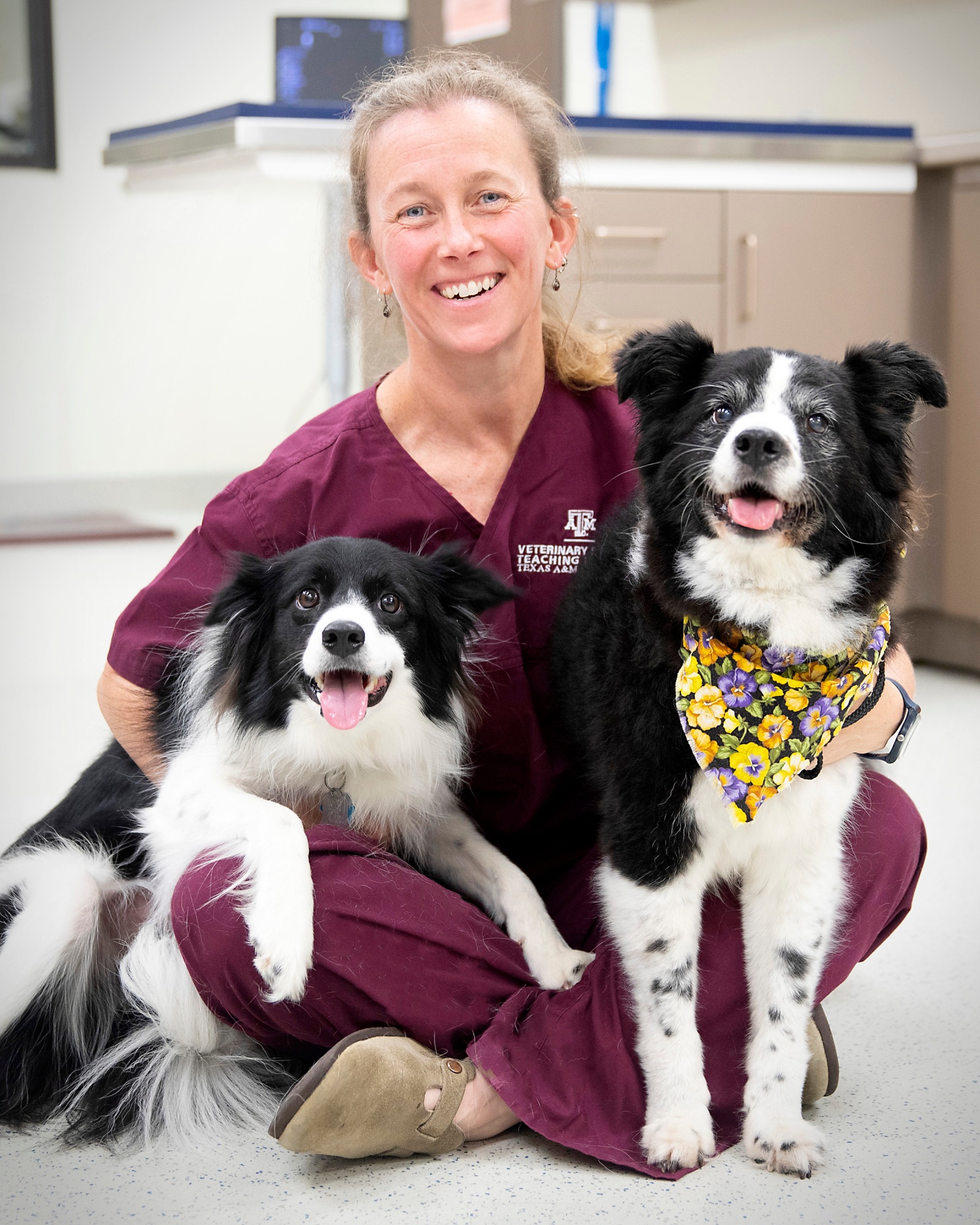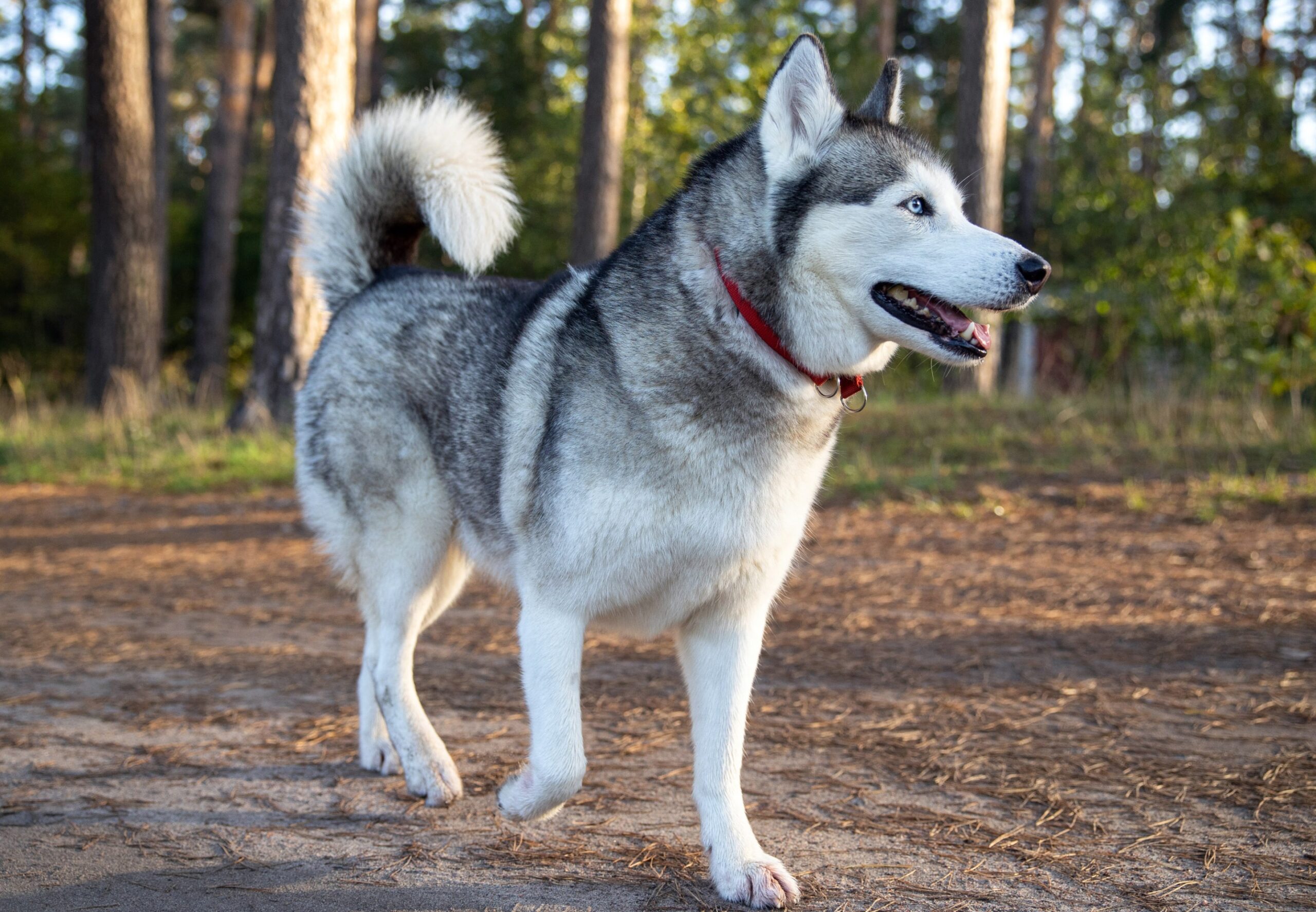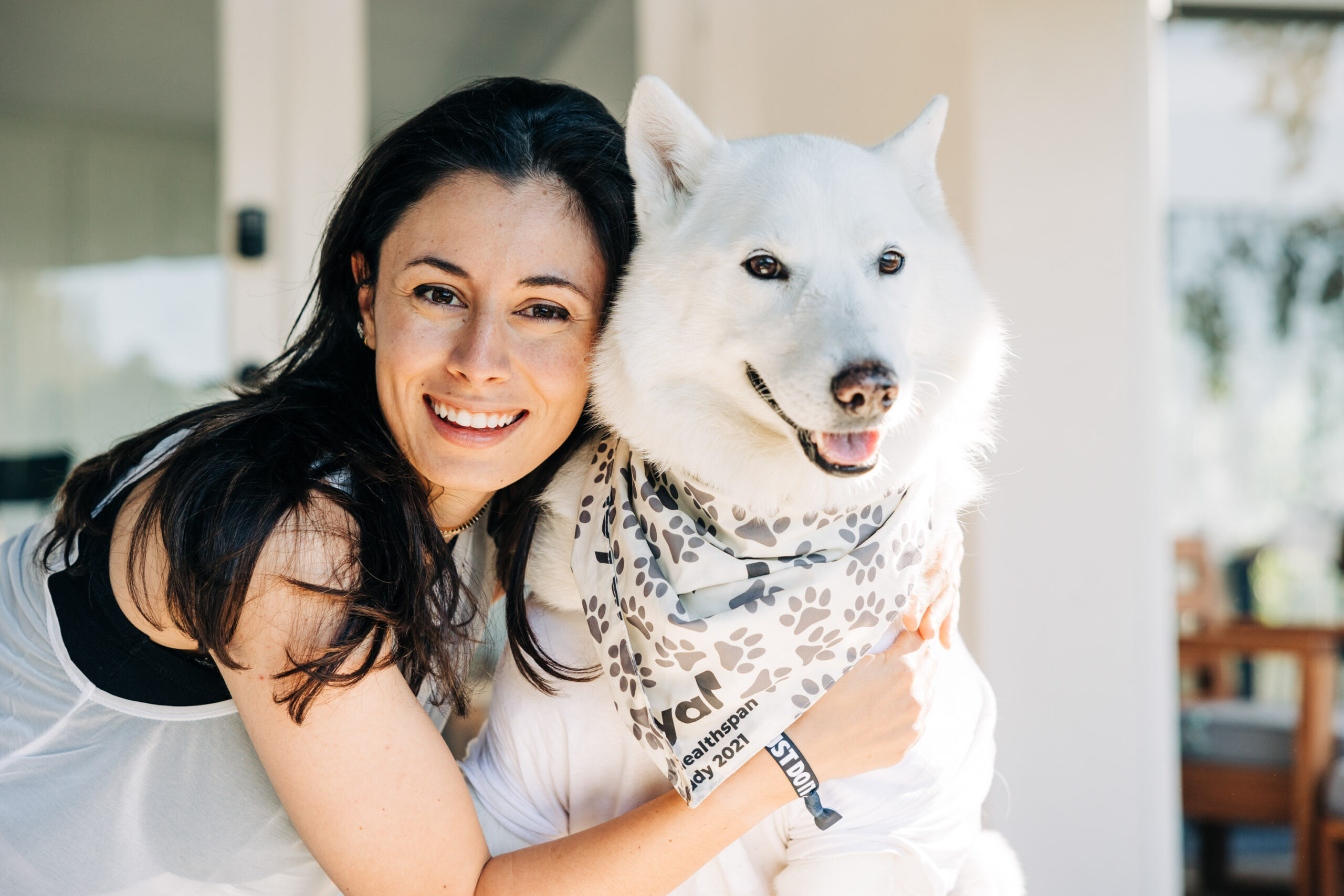Subtotal: 4.195,19€ (incl. VAT)
These scientists are working to extend the lifespan of pet dogs—and their owners
Matt Kaeberlein is what you might call a dog person. He has grown up with dogs and describes his German shepherd, Dobby, as “really special.” But Dobby is 14 years old—around 98 in dog years. “I’m very much seeing the aging process in him,” says Kaeberlein, who studies aging at the University of Washington in Seattle.
Kaeberlein is co-director of the Dog Aging Project, an ambitious research effort to track the aging process of tens of thousands of companion dogs across the US. He is one of a handful of scientists on a mission to improve, delay, and possibly reverse that process to help them live longer, healthier lives.
The Dog Aging Project is just one of several groups seeking to understand and improve dog aging. Biotech company Loyal has plans to offer life extension for dogs. And a third group, running a project called Vaika, is looking for ways to lengthen lifespan through a study on retired sled dogs.
But dogs are just the beginning. Because they are a great model for humans, anti-aging or lifespan-extending drugs that work for dogs could eventually benefit people, too. In the meantime, attempts to prolong the life of pet dogs can help people get onboard with the idea of life extension in humans, say researchers behind the work. “It will go a long way to convincing people that this is possible [in humans],” says Kaeberlein. “Aging is modifiable.”
For the love of dog
“I love dogs,” says Kate Creevy, who studies dog aging and infectious disease in animals at Texas A&M University in College Station. “You’re not motivated to do this work if you don’t love dogs.” Creevy, who is also chief veterinary officer of the Dog Aging Project, is one of around 40,000 people with a dog enrolled in the study.
All participants provide their pet dog’s medical history and complete detailed surveys on an annual basis. “It takes about three hours,” says Creevy. A subset of around 8,500 dogs will have their genomes sequenced, and some of these will have their hair, blood, and urine studied as well.

DOG AGING PROJECT/ UNIVERSITY OF WASHINGTON
Smaller groups of dogs are being more closely studied for specific disorders. The team will assess 200 dogs with a form of dementia known as canine cognitive dysfunction, or CCD, for example.
The idea is to find biological clues that might help identify which dogs might be at risk of developing such diseases in the future—and eventually aid the discovery of drugs that might prevent or treat them. The team also hopes to find out which aspects of a dog’s lifestyle might help extend its “healthspan,” the number of years lived in good health.
“We expect to learn which types of diets, which types of exercise regimes, and which types of husbandry are associated with better long-term outcomes,” says Creevy, “so that we can do things that help them have a better quality of life into their later years.”
“I was like, man, I would love if I could slow aging in my dog.”
Matt Kaeberlein, co-director of the Dog Aging Project
But the research has another goal. Kaeberlein says his “lightbulb moment” occurred around 10 years ago, when he suddenly realized that, not only would such research reveal how dogs age—it might identify ways to slow the process. “I was like, man, I would love if I could slow aging in my dog,” he recalls.
The Dog Aging Project will trial potential anti-aging drugs among groups of pets. The first being studied is rapamycin, a drug that has been found to extend the lives of flies, worms, and mice in the lab. Rapamycin is thought to mimic the effects of caloric restriction, which has been shown to help multiple species live longer. The drug works by blocking a molecule called mTOR, which controls cell growth and metabolism and responds to nutrient intake. “I’m convinced that some of the interventions that we know extend lifespan and healthspan in mice will work in dogs,” says Kaeberlein. “It’s really just a matter of showing it through clinical trials.”

DOG AGING PROJECT/ UNIVERSITY OF WASHINGTON
Kaeberlein and his colleagues are currently trialing the drug in dogs aged seven or older. So far, they have only run a couple of small trials designed to test its safety. In the latest—a six-month study involving around 17 dogs that has not yet been published—the drug appeared to be safe, says Kaeberlein.
Neither trial was large enough to test the effects of the drug. But the owners of dogs given rapamycin tended to report that the dogs became more active. These owners didn’t know whether their pet was being given the drug or a placebo. “So we think that’s probably a real effect,” says Kaeberlein. But he doesn’t know exactly what the effect might be. “It could be a decrease in pain or arthritis, or it could be that the drugs make dogs hyperactive,” he says.
To get a better idea, the team is currently enrolling 580 dogs in a larger clinical trial. For one year, half the dogs will get the drug, and half will be given a placebo. The team will then follow the health of the animals for another two years. They aim to find out whether the drug can extend the animals’ lifespan, but they will also look at the animals’ overall health—whether they develop cancer or heart disease, for example.
Saving sled dogs
Creevy, Kaeberlein, and their colleagues aren’t the only ones seeking to extend the lifespan of humans’ closest furry friend. Andrei Gudkov and his colleagues are taking a different approach.
Gudkov, a professor of oncology at Roswell Park Comprehensive Cancer Center in Buffalo, New York, has long been interested in understanding aging. “Studying this in humans is … very impractical, because usually your own life is not long enough to see the fruits of your work,” he says. “A dog’s life is sufficiently shorter than a human life, and allows us to do reasonable experiments and see the results.”
He, Katerina Adrianova, and Daria Fleyshman are the founders of Vaika, a project to study aging—and attempt to slow or reverse it—in a group of dogs that have retired from sled racing. For the last four years or so, the team has collected dogs aged between eight and 11 from kennels in northern US states and Canada. The dogs are cared for at a site in Ithaca, New York, and carefully monitored until the end of their lives.

GETTY IMAGES
Gudkov’s focus is on DNA damage, which accumulates in an animal with age. This damage can provide a signal to the immune system to destroy affected cells, resulting in damage to tissues. Some of this DNA damage is caused by what Gudkov calls the retrobiome—fragments of ancient viruses that have been incorporated into our DNA over millions of years of evolution.
The parts of an animal’s DNA that contain these fragments are usually kept “silent” by epigenetic markers, says Gudkov, but the system seems to break down with age. Gudkov believes that these ancient virus fragments are a major cause of age-related decline in humans and other animals, including dogs.
His team is trialing an experimental anti-aging drug that he believes will stifle the activity of the retrobiome in the 103 dogs collected so far. If the drug can prevent DNA damage, it should allow the animals to live longer, healthier lives, says Gudkov. As part of the trial, half the dogs will receive the drug, while the other half will be given a placebo, and the team will look for signs of aging in all of them. Gudkov says he has some preliminary results but doesn’t want to make them public yet.
The Vaika study is a not-for-profit endeavor, and Gudkov describes it as a “hobby.” But Celine Halioua plans to make a business out of life extension in pet dogs. Halioua, another avowed “animal person,” founded the biotech startup Loyal to “explicitly develop drugs intended to increase lifespan and healthspan.”
Like the members of the Dog Aging Project and Vaika, Halioua’s team at Loyal is looking for biological clues that might hint at which animals are prone to faster aging and which are likely to enjoy a longer, healthier life.

ELISA FERRARI/LOYAL
As well as searching for markers in blood, saliva, and urine, Halioua’s team will look at epigenetic markers—chemical groups that attach to DNA and control how genes make proteins. These patterns appear to change over a lifetime, and some scientists have developed “aging clocks” to guess an organism’s biological age from that information.
The team at Loyal will soon be launching clinical trials of two drugs, which the company refers to as LOY-001 and LOY-002. Halioua won’t give much away about either one but says that the first is an implant aimed at larger dogs, which tend to have shorter lifespans, while the second, a pill, will be trialed in older dogs of various breeds. The second drug works in a similar way to rapamycin, says Halioua.
Model behavior
If either drug works in dogs, it could also be tested in people—an eventual goal for Halioua. Dogs are an excellent model for studying human aging and any drugs that might slow or reverse it, say researchers contacted by MIT Technology Review.
Until fairly recently, most aging research has focused on yeast, worms, and mice in a lab. The work has revealed plenty of fascinating insights into how these organisms age—but the relevance of the findings to humans is up for debate.
Dogs provide a much better model for studying human aging. They are unique in sharing our environment. Pet dogs live in our homes with us, breathe the same air we do, and often share our exercise routines, to some degree. “They’re eating our food, they’re walking on our lawns with pesticide, they’re drinking whatever is in our water,” says Elaine Ostrander, who leads a team studying human and dog genetics at the National Human Genome Research Institute of the National Institutes of Health in Bethesda, Maryland.
They also develop many of the same age-related diseases that we do. Technically, most pet dogs die as a result of euthanasia. But in most of these cases, the animals have cancer, says Kaeberlein. Dogs can also develop heart disease in later life, just like humans. There are some differences—dog brains aren’t the same as human ones, although the animals do seem to develop a form of dementia. And dogs don’t tend to develop vascular diseases as humans do.
But there are plenty of similarities. Both dogs and people experience aging of the immune system and an increased risk of kidney disease as they get older, says Kaeberlein. “It seems like, at the level of individual age-related diseases, it’s very, very similar,” he says.
One main difference is that aging is a much quicker process in dogs—it happens around seven times faster than in humans, though small dogs generally live longer than larger ones. (It’s not quite the case that one year of dog life is equivalent to seven human years, however. Dogs seem to age more rapidly than humans do in their first years of life, and the pace slows as they get older.)

PHOTO ILLUSTRATION: MS TECH | ENVATO, GETTY. NYPL, NATIONAL GALLERY OF ART
While this can be devastating for devoted owners, it is useful for researchers, who are able to study the effects of potential anti-aging drugs over the entire lifespan—something that is much more difficult to achieve in people.
Another unique feature of dogs is their incredible diversity. Only in dogs do we see such extreme differences in size and appearance within a single species. A Great Dane is around 20 times heavier than a Chihuahua, for example. A Pomeranian looks nothing like a Staffordshire bull terrier.
This variation makes the animals particularly fascinating to geneticists like Ostrander. “Dogs were only domesticated around 30,000 years ago, and most breeds have only been around since the Victorian times,” she says. It was around the mid-1800s that modern dog breeding took off, and owners bred dogs for aspects of their appearance, such as a curly coat or a flat face. Breeders essentially selected dogs with genes for these features.
Because many such modifications only occurred in the last hundred or so years, genetic differences between today’s dog breeds are likely to have a significant impact on these traits—and on the risks of certain diseases that vary between breeds.
This makes it much easier to identify genes of interest in dogs than in humans, says Ostrander. “For me as a geneticist, it’s kind of like being a kid in a candy shop,” she says. “I can figure out the main players [among genes] … then we can look at human health and human biology.”
Ostrander studies cancer, which affects different dog breeds differently. To learn more about bladder cancer, for example, she and her colleagues will study Scottish terriers and West Highland white terriers, which appear particularly prone to developing the disease. Her team will then compare the genomes of these dogs with those of other breeds that don’t get bladder cancer. “It becomes much, much easier to find those genes [linked to bladder cancer],” she says. “We don’t have a way to do that very efficiently in humans.”
Once the team has identified genes linked to a particular cancer, they inform other scientists who are working on human disease. “We can say … ‘These are the genes you want to look for [in humans] to see if you can develop targeted therapeutics,’” she says.
Researchers hope the same is true of aging—that in discovering genes linked to long, healthy life in dogs, we might also learn what might help humans live longer.
They also hope that any successful attempts at life extension in pet dogs will make human life extension more palatable. Halioua feels the field has “suffered from a branding issue” owing to outlandish claims made in the 1990s and 2000s. “Big names in the field were yelling about 1,000-year lifespans and immortality,” she says. “To be clear, we’re not creating 1,000-year-old dogs.”
Not only were these claims unfounded, but they also led to concerns about economic equality. Who would get to live such a long life? And how would they be supported? “There is no societal strife caused by your dog living a few extra healthy years,” says Halioua. “It’s a nonthreatening way to introduce what is otherwise a very foreign idea.”

GETTY IMAGES
Kaeberlein agrees. “I think [people] don’t always get why targeting aging in humans would be a good thing,” he says. “If we can target the biology of aging successfully in companion animals … that’ll go a long way to convincing people that this is possible [in humans]. It’s not science fiction; it’s just biology.”






